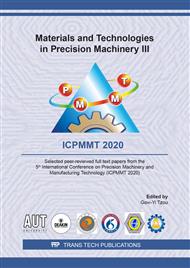p.27
p.33
p.41
p.48
p.56
p.64
p.74
p.80
p.88
Numerical Simulation of Multiphase Flow on Temperature Effect for Proton Exchange Membrane Fuel Cell
Abstract:
There is a significant effect for the performance of proton exchange membrane fuel cell with the liquid water generated in cathode channel during the operation process In this paper, based on the numerical simulation of three-dimensional and VOF model of multiphase flow, according to the different flow channel design and the change of different inlet temperature, the transport phenomena of multiphase flow in PEMFC is discussed at temperature effect. In U-shaped cathode channel with bump scale (h/H=1/4), a long water film is assumed to cover the surface of the gas diffusion layer at the entrance. Under the simulated oxygen flow conditions of inlet 200 Reynolds number, 4.4 Weber number and inlet temperature 333K, the water film heated is not obviously affected by oxygen flow from inlet channel to bend channel. Subsequently, the shape of water film is elongated and broken from outflow of bend channel to outlet channel. The computational results are obtained that the residual broken water film can be existed in the outlet channel. The flow field temperature can affect the residual flow rate of water film in the channel. The residual rate of water film in the hot flow field is lower than that in the cold flow field.
Info:
Periodical:
Pages:
56-63
Citation:
Online since:
October 2020
Authors:
Keywords:
Price:
Сopyright:
© 2020 Trans Tech Publications Ltd. All Rights Reserved
Share:
Citation:


